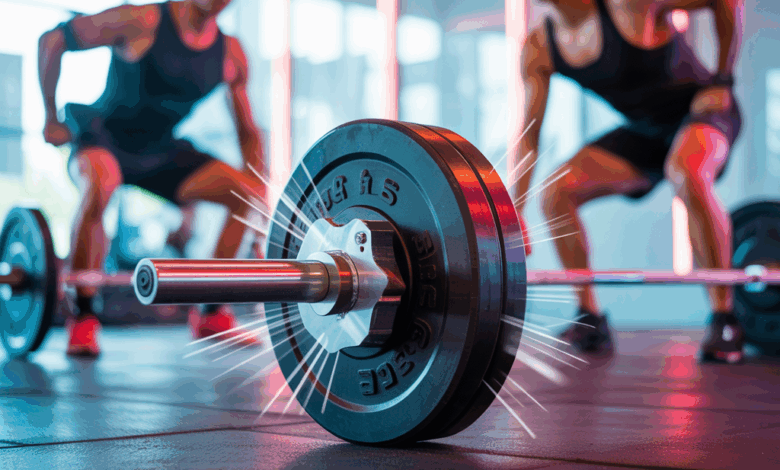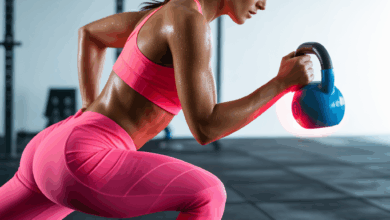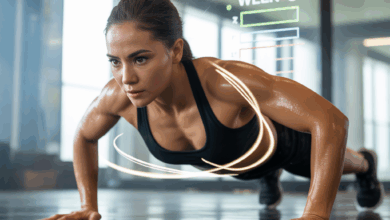Barbell Clamp for Security: Keep Plates Locked and Your Workouts Safe

Ever felt that tiny panic when a plate slips mid-rep or heard the clatter of unsecured weights at 5 a.m.? Whether you’re training heavy deadlifts or doing fast-paced CrossFit metcons, a single wobble can ruin a set—or worse, cause injury. That’s why choosing the right barbell clamp for security should be non-negotiable in every home gym and commercial facility.
Why a barbell clamp for security matters
Barbell clamps (also called barbell collars, weight clips, or plate clamps) keep your plates in place, stabilize the load, and reduce the risk of accidents. For lifters who use bumper plates, Olympic bars, or standard bars, the right clamp protects both you and your equipment. If you’re asking, “what’s the best barbell clamp for security?”—this guide breaks down types, tips, and real-world usage so you can lift confidently.
Types of barbell clamps and when to use them
Spring collars
Spring collars are quick to install and inexpensive. They work well for casual lifters and light-to-moderate loads, but can slip if not seated properly. Use them for general strength training, warm-ups, and when changing plates frequently.
Locking collars (screw or lever)
Locking collars—such as screw-lock clamps and quick-release lever collars—provide superior hold for heavy lifts. They’re the go-to for powerlifting, Olympic lifting, and high-intensity circuits where plate movement is dangerous. If you need the best barbell clamp for security during heavy squats or aggressive drops, look here.
Specialty clamps and integrated collars
There are also specialty plate clamps for bumper plates and machines with integrated collars. These are ideal for commercial gyms and CrossFit boxes where durability and speed matter.
How to choose the right clamp: practical buying tips
- Match the clamp to your bar: Olympic (2″ sleeve) vs standard bars.
- Material matters: stainless steel or high-quality aluminum for longevity; heavy-duty plastic for light use.
- Read the hold test: choose clamps with proven grip or locking mechanisms for heavy lifts.
- Consider speed and convenience: quick-release collars save time in metcons.
- Price vs durability: invest a bit more for reliable security—it’s a safety purchase, not a convenience one.
Setting up and using clamps safely
- Slide plates evenly onto the sleeve so there’s no gap between the inner plate and collar.
- Seat the clamp firmly against the outside plate; for spring collars, compress fully; for lever collars, ensure the latch is fully engaged.
- Give a light shake test before your first rep to verify the plates are secure.
- Inspect clamps regularly for wear—replace when springs weaken or threads strip.
Workout tips and variations that benefit from secure clamps
Securing plates unlocks certain training styles that are risky otherwise. Try these variations:
- Heavy paused squats: locks prevent plate shift during deep pauses.
- Explosive deadlift sets: secure clamps avoid imbalance on the descent.
- Supersets with fast bar changes: quick-lock collars keep transitions smooth.
- Drop sets and negative-focused reps: locking collars protect when intentionally lowering weight abruptly.
Healthy lifestyle tips to support safe lifting
Equipment is only one part of a safe training plan. Pair secure barbell clamps with these habits:
- Warm up thoroughly—dynamic mobility and progressive loading reduce injury risk.
- Prioritize sleep and recovery; fatigue increases form breakdown and accidents.
- Maintain balanced nutrition—adequate protein and minerals support tendon and muscle resilience (see our nutrition guides).
- Keep a tidy, well-lit gym area; clear space reduces trips and plate misplacement.
Real-world examples: clamp choices from lifters and gym owners
Case 1: Home lifter upgrading from spring collars to lever-lock collars reported confident progression from 225 to 315 lbs without plate slippage during high-volume squats.
Case 2: A small CrossFit affiliate switched to heavy-duty quick-release collars after noticing frequent plate migration during AMRAPs. Result: fewer interruptions and reduced equipment damage.
Maintenance and troubleshooting
Even the best clamps need care. Wipe down metal collars after sweaty sessions, tighten screw-locks periodically, and replace any clamp showing rust, stripped threads, or weakened springs. If a clamp tends to slip, try rotating it to a new spot on the sleeve or swapping to a locking-style collar.
Frequently Asked Questions
- 1. Are barbell collars necessary for light workouts?
- Yes—while the risk is lower with light weights, collars still prevent plate movement during dynamic exercises and protect against accidental plate sliding, especially on unevenly loaded bars.
- 2. Which is better for security: spring collar or locking clamp?
- Locking clamps (screw-lock or lever) generally offer better security for heavy or explosive lifts. Spring collars are fine for warm-ups and casual use, but they can lose tension over time.
- 3. How often should I replace my barbell clamp?
- Replace clamps when you notice reduced tension, visible wear, rust, or if the locking mechanism feels loose. For heavy gym use, inspect monthly and replace worn clamps promptly.
Tips for integrating clamps into your routine
Make clamping a habit—place clamps near your rack or barbell station so you never forget them. During classes or partner work, designate responsibility for clamps to streamline transitions. For home gyms, keep a spare pair of high-quality locking collars on hand.
Conclusion: Secure your gains with the right barbell clamp for security
Whether you’re a weekend warrior or a competitive lifter, a reliable barbell clamp for security protects your training, prolongs equipment life, and gives you the peace of mind to push harder. Invest in quality collars, practice proper setup, and pair equipment safety with smart training habits. Ready to level up your workout safety? Explore our workout routines and wellness tips to put secure lifting into action—then grab a set of dependable clamps and start lifting safer today.
Call to action: Review your current collars, pick the right type for your bar, and commit to one safety upgrade this week—your next PR might depend on it.





